
Every year, Service and Conservation Corps across the country partner with the National Park Service (NPS) to engage young adults and recent veterans in maintaining some of America’s most treasured natural and cultural resources. From restoring habitats, to building new trails, to preserving historic buildings, Corpsmembers complete important projects to help make our parks accessible, sustainable, educational and relevant. To celebrate National Park Week (April 20 – 28, 2019), we’re highlighting some of the many ways in which Corps are proud to partner with NPS.
#FindYourPark
#National Park Week
 Utah Conservation Corps
Utah Conservation Corps
Capitol Reef National Park
Habitats and Landscape
Utah Conservation Corps partnered with Capitol Reef National Park last fall. These AmeriCorps members worked on a variety of projects around the park, including a barrier fence along the south side to keep cattle from getting into the park.
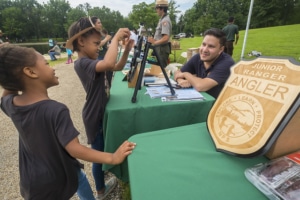 Conservation Legacy – Stewards Individual Placement Program
Conservation Legacy – Stewards Individual Placement Program
Fort Washington and Oxon Cove Parks
Education
Diego Contreras, an AmeriCorps VISTA member with Stewards Individual Placement Program, served at Fort Washington and Oxon Cove Parks as part of the National Junior Ranger Program in Washington, DC. Diego worked on making both the physical and the digital Junior Ranger Program more accessible, relevant and meaningful to children nationally by bringing the nation’s parks to children who might otherwise not experience them. Through his focus on urban and impoverished communities, he worked on promoting and expanding the program beyond park boundaries to include community based programming in underserved populations.
Conservation Legacy
Rivers, Trails, and Conservation Assistance Program
Habitats and Landscape
Conservation Legacy works closely with the National Park Service to place AmeriCorps members all across the country. As part of this partnership, Emma Lord served her second AmeriCorps member with the National Park Service Rivers, Trails, and Conservation Assistance (RTCA) Program in the state of New Hampshire. The RTCA program supports community-led natural resource conservation and outdoor recreation projects across the nation. One of the projects Emma worked on was the Transportation and Infrastructure Projects on Wild and Scenic Rivers training workshop at the 2018 River Management Society Symposium in October 2018.
When asked about her service Emma stated, “I have been and will continue to be interested and passionate about conservation and protection of natural resources, and working with the NPS has only solidified that.”
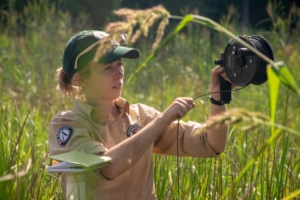 Conservation Legacy
Conservation Legacy
Colonial National Historical Park & The Geological Society of America
Habitats
Conservation Legacy places AmeriCorps members at National Park Service (NPS) sites all over the country. One particular NPS program, Geoscientists-in-the-Parks (GIP) matches college students and recent grads at NPS sites who want to use their expertise to help the agency to better understand and manage its natural resources. One GIP, Jennifer Cramer who is based at Colonial National Historical Park in Virginia, is involved with many important projects at the park. One of the projects Jennifer is most proud of includes collecting datasets and making plots to relate groundwater responses to extreme weather like Hurricane Florence. Jennifer is also heavily involved in a vulnerability assessment of the 56 archaeological sites across Jamestown island.
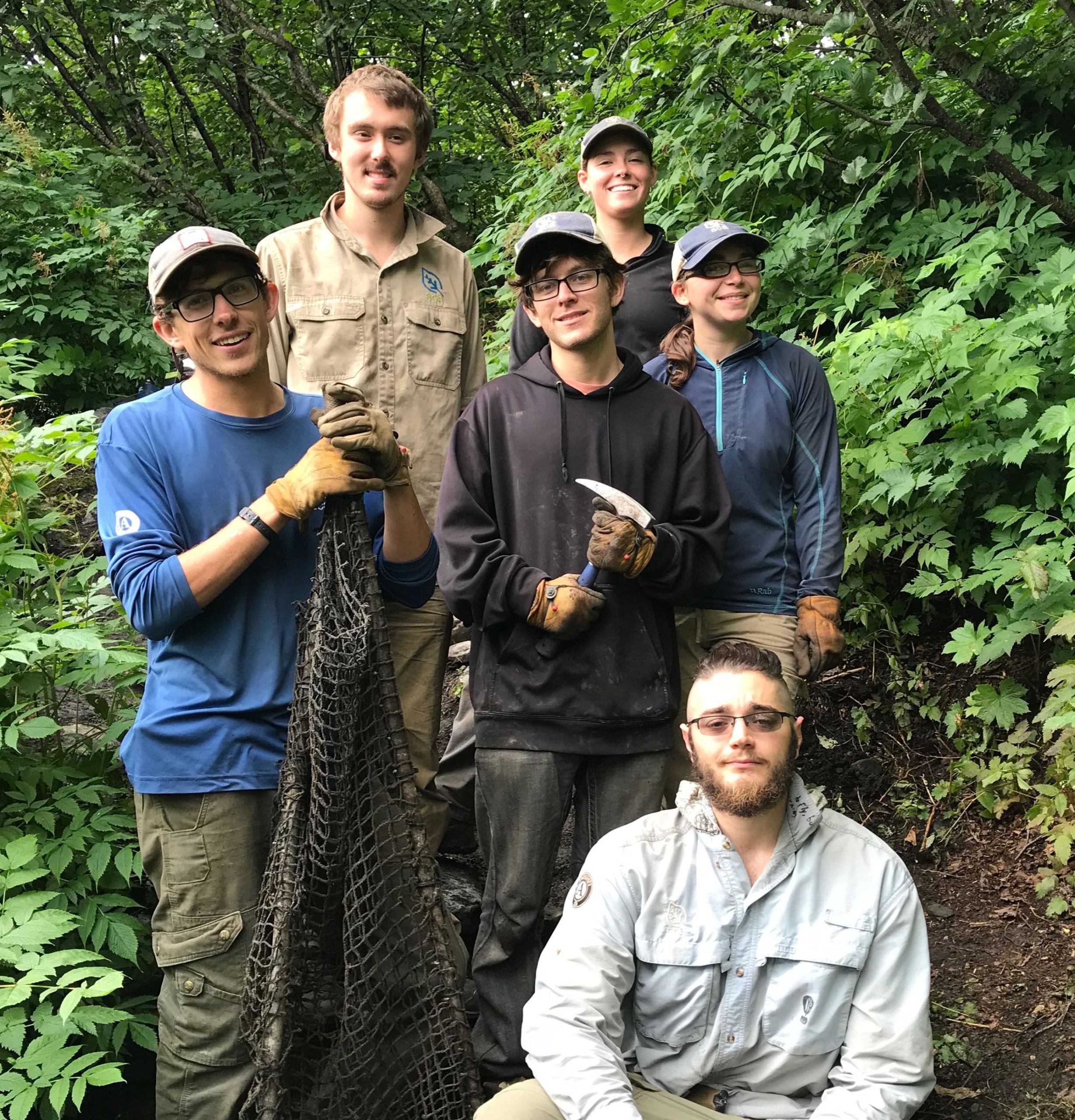 Student Conservation Association
Student Conservation Association
Kenai Fjords National Park
Trails
Each year, Student Conservation Association (SCA) sends Conservation Corpsmembers to serve for several weeks at Alaska’s Kenai Fjords National Park, working to maintain the popular Harding Icefield Trail.
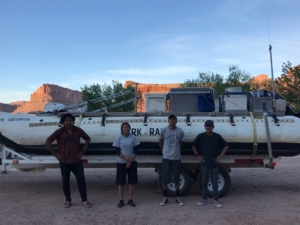 Canyon Country Youth Corps
Canyon Country Youth Corps
Arches National Park
Habitats
Due to a successful partnership between Canyon Country Youth Corps and Arches National Park and funded by the National Parks Foundation, Ancestral Lands Corpsmembers have been able to remove invasive species while floating down the Colorado River. Canyon Country Youth Corps is excited to continue working with the Arches River Ranger and staff on future projects.
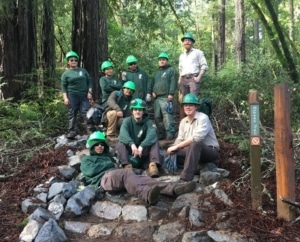 Conservation Corps North Bay
Conservation Corps North Bay
Golden Gate National Recreation Area
Trails
This past winter, Conservation Corps North Bay (CCNB) was awarded a grant through California’s SB 1 Active Transportation Program (ATP) to enhance and restore the Dipsea stairs, located in the Golden Gate National Recreation Area. CCNB Corpsmembers have a history of working with partners to preserve and protect Marin’s most cherished hiking and running trails.
Due to wear and tear and the natural effects of time, the Dipsea stairs needed repairs to maintain their structural integrity. Working in partnership with Golden Gate National Park Conservancy and the National Park Service, Corpsmembers focused on infrastructure, installing new stone stairs and replacing cracked ones to control erosion and to minimize safety concerns for thousands of visitors to the trail. Learning from NPS experts, Corpsmembers used traditional masonry techniques of laying stone by hand to lessen environmental impact and help maintain the historic character of the stairs.
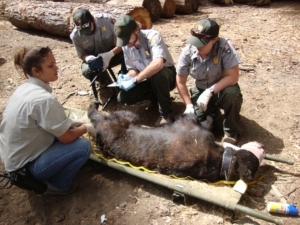 Student Conservation Association
Student Conservation Association
Yosemite National Park
Wildlife
For the past 10 years, Student Conservation Association (SCA) has partners with Yosemite National Park on Black Bear Management internships. These interns assist park biologists in reducing human-wildlife conflicts by detecting and mitigating the availability of human food in campgrounds, parking lots, lodging facilities, and other park areas. In addition, interns assist with monitoring movements of bears using radio telemetry, assist in capture and relocation of bears and other wildlife, assist with negative conditioning of bears and other wildlife using various tactics, and enter daily patrol data into a database. Interns also participate in wilderness patrols focusing on educating hikers and backpackers about bears and proper food storage.
Great Basin Institute
Great Basin National Park
Wildlife
During the 2015-2016 and again in 2019, Great Basin Institute coordinated with the National Park Service and Great Basin National Park to implement bat monitoring and public outreach at Great Basin National Park in eastern Nevada. Bat surveys provide current information on life history, population status and trends, location of key concentrations of bats, and habitat conservation needs. To better understand species density, richness and diversity within the park, surveys include information on locations of roosts, roost fidelity, frequency of changes in roost occupancy, and associated foraging requirements. Assisting with bat monitoring provides opportunities for developing a diverse array of field techniques, including mist netting, exit and roost counts, and acoustic sampling. This work generates data providing key indicators of species density, richness, and diversity to inform adaptive management strategies. Engaging in public outreach to inform park visitors about their role in preventing the spread of White Nose Disease is part of the monitoring and outreach program.
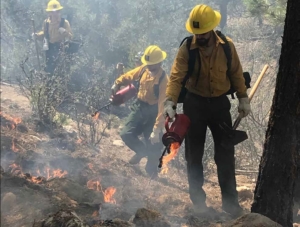 Conservation Legacy – Arizona Conservation Corps and Southwest Conservation Corps
Conservation Legacy – Arizona Conservation Corps and Southwest Conservation Corps
WASO & NPS Intermountain Fire Program
Military and Habitat
Conservation Legacy’s Veterans Fire Corps (VFC) engages recent era veterans on priority hazardous fuels and prescribed burn projects while developing the next generation of wildland firefighters. The VFC successfully addresses two needs 1) veterans who need a way to transition from military to civilian service and 2) land management agencies who need highly qualified and well trained employees.
Arizona Conservation Corps
The inaugural Arizona Conservation Corps Veterans Fire Corps crew has been working in partnership with the National Park Service to protect homes and reduce fuel load and the chances of catastrophic wildfire at the Grand Canyon and Bryce Canyon National Parks. The Corps has been performing prescribed burns, introducing fire back into ecosystems where historically fire has been a natural occurrence. By reducing fuel loads and re-introducing low intensity fire, Corpsmembers are helping to protect life, property and the natural environment of our National Parks. The crew will continue to work in Grand Canyon National Park, Bryce Canyon National Park and will start work in Saguaro National Park this fall.
Southwest Conservation Corps
The Veteran Fire Corps crew of Southwest Conservation Corps has been working with Rocky Mountain National Park on fire/fuels mitigation projects that will contribute to wildland urban interface buffer zones between the National Park and private lands in order to reduce the potential spread of wildfire in the future. As the crew moves further into their season they will continue working primarily on fire/fuels mitigation projects such as thinning and fire break creation, as well as assisting in prescription fire efforts to help reduce the chance of large fire events. These efforts will be performed in Rocky Mountain National Park, Bandelier National Monument, Valles Caldera National Preserve, Mesa Verde National Park and Aztec Ruins National Monument.
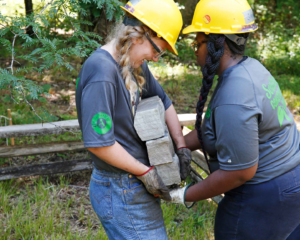 Conservation Legacy
Conservation Legacy
Chickamauga and Chattanooga National Military Park
Habitat and Historic Preservation
A Conservation Legacy Crew was tasked with the restoration of the original historical fence line that bordered the Dyer farm during the battle of Chickamauga during the Civil War. The 700 foot fence was placed right off a trail going up Strawberry Hill on Glenn-Kelly Road. Earlier in the week, the group used an old map to create a scaled version for the restoration. By working with staff at Chickamauga and Chattanooga National Military Park, the team was able to complete this work using modern day tools but followed traditional practices.
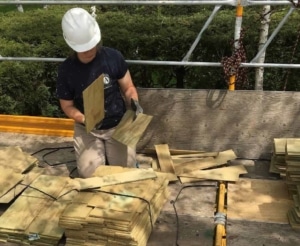 Conservation Legacy
Conservation Legacy
Historic Preservation Training Center
The Historic Preservation Training Center (HPTC) and Stewards Individual Placement Program partnership provides training, vocational skills development and experience for individuals interested in the historic preservation trades. Since the HPTC is part of the National Park Service, members gain skills while helping to preserve the historic structures, monuments and memorials throughout the park system. In 2018, Conservation Legacy and the HPTC program placed 55 participants.
Corpsmember Highlights:
“I will be continuing into another term with the Project Management section of HPTC and hope to become a term employee in the future. [The Eisenhower NHS project] allowed me to utilize a lot of the skills I learned in school and allowed me to learn much more about the restoration aspect of construction. It pushed me to be confident in my knowledge and decisions, and I had a great support system from my coworkers.” – Josh Eavis, Eisenhower National Historic Site
“My internship has been phenomenal. One of my favorite projects has to be the restoration of The Chapel at the Tomb of the Unknown Soldier. The tomb is a sacred place and we had to be very careful working as to not to disrupt ceremonies. The windows were beautifully restored by our team. I completed the necessary repairs in a building that millions of people find sacred.” – Ben Branholts, Arlington National Cemetery
“We learned the terms preservation, restoration and conservation first hand. Putting those words into action was exciting and fulfilling. Restoring windows is a great way to conserve energy, materials and workmanship.” – Susan Hinton, Gettysburg National Battlefield
Rocky Mountain Youth Corps
Salinas Pueblo Missions National Monument
Historic Preservation
AmeriCorps Members with Rocky Mountain Youth Corps completed historic preservation and restoration work at the Salinas Pueblo Missions National Monument. The crew removed old plaster and applied new mixed plaster to the Quarai Missions building to preserve the history of early cultural interactions between Spanish settlers and Pueblo Peoples in the Middle Rio Grande region.
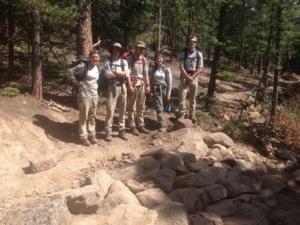 Rocky Mountain Conservancy
Rocky Mountain Conservancy
Rocky Mountain National Park
Trails
In 2019, the Rocky Mountain Conservancy helped to rebuild the Aspen Brook Trail in Rocky Mountain National Park. This trail has remained damages since the 2013 Colorado floods. It required reroutes, stabilization, and restoration work. The Corpsmembers established new trail tread, constructed switchbacks and check steps, and helped decommission and restore old trail corridor with six AmeriCorps members and over twenty volunteers.
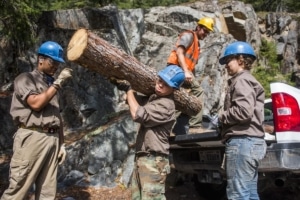 Northwest Youth Corps and Idaho Conservation Corps
Northwest Youth Corps and Idaho Conservation Corps
Works across 13 National Park Service sites
Trails and Habitat
Northwest Youth Corps and Idaho Conservation Corps have a vibrant and effective partnership with national parks in Idaho, Oregon and Washington. In 2018, the Corps mobilized 322 young people to provide 13 NPS parks and sites 38,000 hours of conservation service. The National Park Service’s commitment to youth programs, along with the determination of the Corps to provide service opportunities from youth and young adults from all backgrounds and walks of life makes this partnership a success.
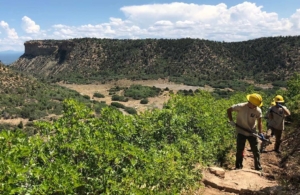 Conservation Legacy
Conservation Legacy
Mesa Verde National Park
Habitat
Southwest Conservation Corps (SCC) crews have a long history of caring for the Mesa Verde National Park. From weed removal, to ensuring campgrounds are bear-safe to maintaining trails throughout the park, SCC is a critical resource as the National Park Service struggles with increasing visitor’s usage and decreasing budgets each year.
This past summer, two crews from SCC’s summer youth programs in Four Corners worked on a variety of projects throughout the park. To help to create a more inclusive amphitheater space for rangers to give evening programs, a crew worked to dismantle a large portion of the existing amphitheater. These crews had the opportunity to work mitigating weeds, both by hand pulling multiple acres of invasive species, and laying weed barrier cloth and gravel around large water tanks throughout the park. One crew had the opportunity to help maintain five miles of trails in the park, to keep them sustainable for the hundreds of thousands of visitors received by the park.
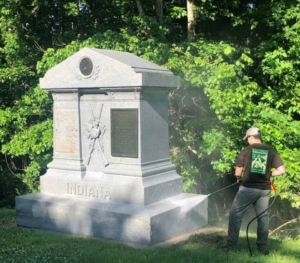 Conservation Legacy
Conservation Legacy
Historic Veteran Trades Apprenticeship program
In 2018, the Historic Preservation Training Center and Stewards Individual Placement Program have begun the Veteran Trades Apprenticeship program (VTAP), specifically providing post-9/11 veterans training and experience in the maintenance and care of federal monuments and memorials. Throughout this program, apprentices develop marketable skills and receive excellent exposure to the historic preservation career field. The Stewards Individual Placement Program placed 8 VTAP members in 2018. The majority are still in service: some have accepted a second term of service and one participant has already accepted a full time post-service employment opportunity in the field of historic preservation.
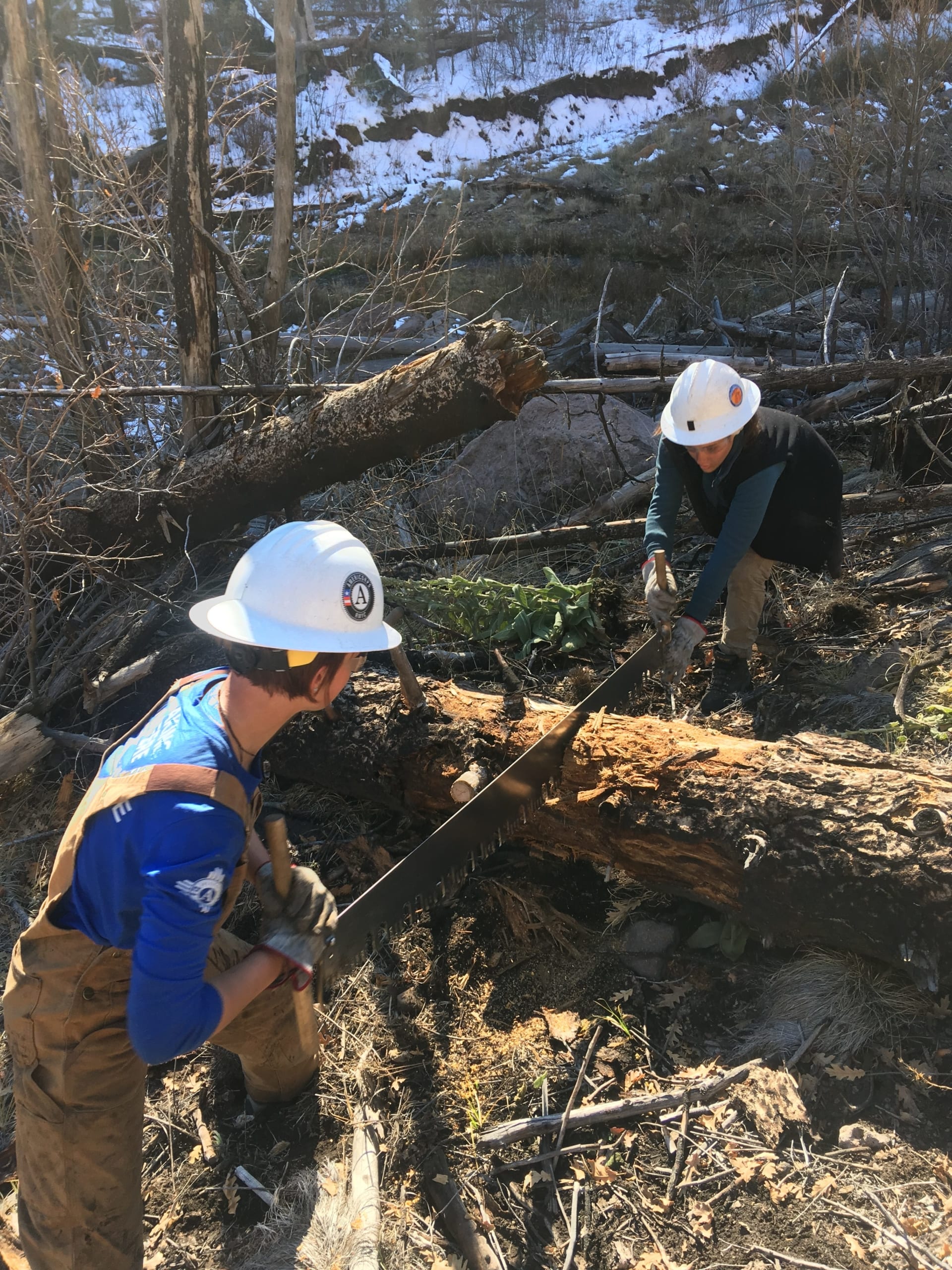 Rocky Mountain Youth Corps (NM)
Rocky Mountain Youth Corps (NM)
Bandelier National Monument
Trails
In the fall of 2018, an Upper Rio Grande (Taos) Conservation Spike Crew cleared out wilderness trails at Bandelier National Monument. These efforts helped hikers and trail users to enjoy the landscape, including the sections previously impacted by the Las Conchas fire in 2011.


































































